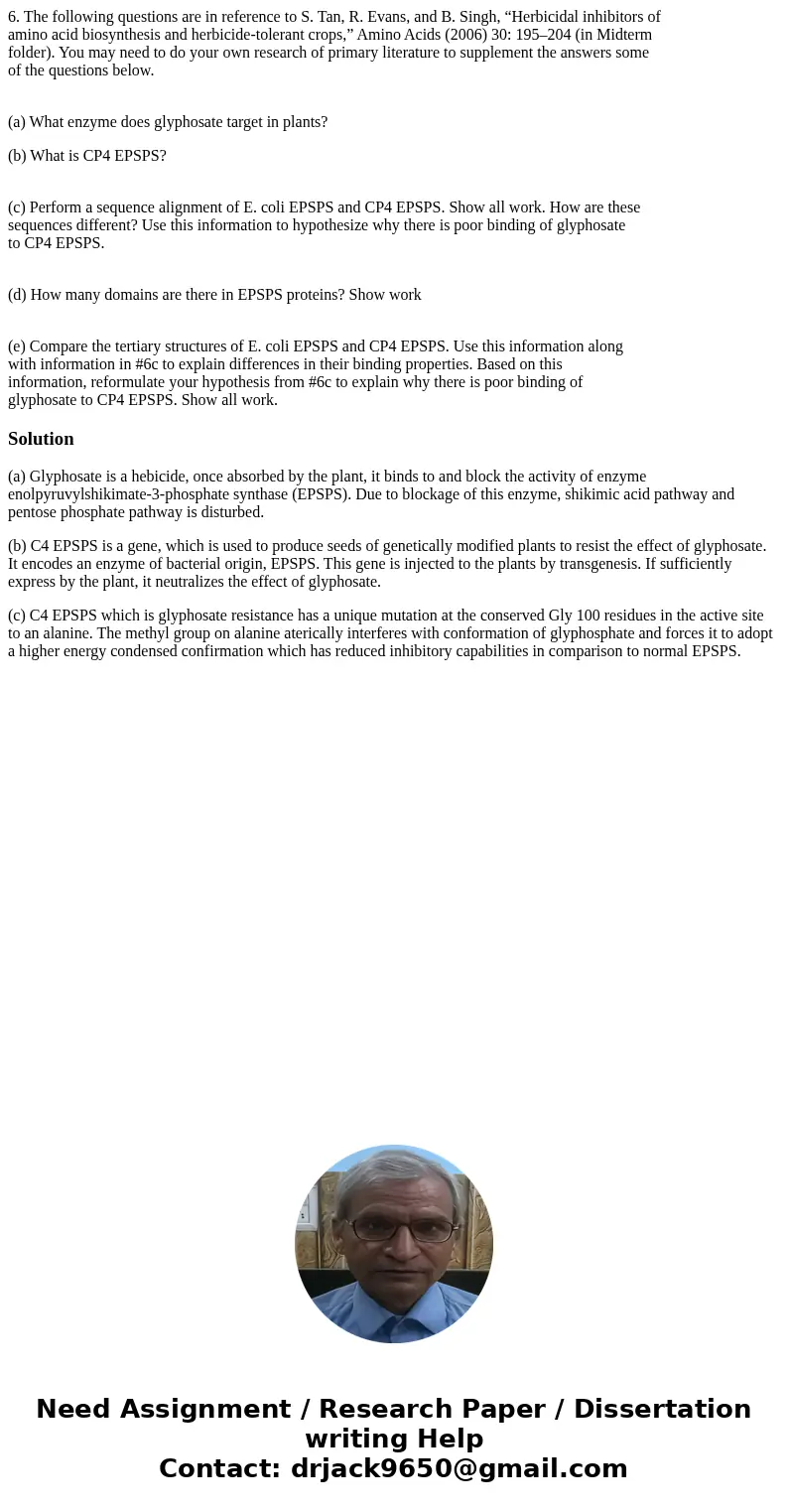6 The following questions are in reference to S Tan R Evans
6. The following questions are in reference to S. Tan, R. Evans, and B. Singh, “Herbicidal inhibitors of
amino acid biosynthesis and herbicide-tolerant crops,” Amino Acids (2006) 30: 195–204 (in Midterm
folder). You may need to do your own research of primary literature to supplement the answers some
of the questions below.
(a) What enzyme does glyphosate target in plants?
(b) What is CP4 EPSPS?
(c) Perform a sequence alignment of E. coli EPSPS and CP4 EPSPS. Show all work. How are these
sequences different? Use this information to hypothesize why there is poor binding of glyphosate
to CP4 EPSPS.
(d) How many domains are there in EPSPS proteins? Show work
(e) Compare the tertiary structures of E. coli EPSPS and CP4 EPSPS. Use this information along
with information in #6c to explain differences in their binding properties. Based on this
information, reformulate your hypothesis from #6c to explain why there is poor binding of
glyphosate to CP4 EPSPS. Show all work.
Solution
(a) Glyphosate is a hebicide, once absorbed by the plant, it binds to and block the activity of enzyme enolpyruvylshikimate-3-phosphate synthase (EPSPS). Due to blockage of this enzyme, shikimic acid pathway and pentose phosphate pathway is disturbed.
(b) C4 EPSPS is a gene, which is used to produce seeds of genetically modified plants to resist the effect of glyphosate. It encodes an enzyme of bacterial origin, EPSPS. This gene is injected to the plants by transgenesis. If sufficiently express by the plant, it neutralizes the effect of glyphosate.
(c) C4 EPSPS which is glyphosate resistance has a unique mutation at the conserved Gly 100 residues in the active site to an alanine. The methyl group on alanine aterically interferes with conformation of glyphosphate and forces it to adopt a higher energy condensed confirmation which has reduced inhibitory capabilities in comparison to normal EPSPS.

 Homework Sourse
Homework Sourse